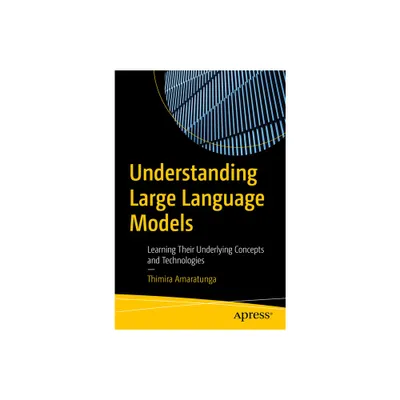Home
Building LLM Powered Applications: Create intelligent apps and agents with large language models
Loading Inventory...
Barnes and Noble
Building LLM Powered Applications: Create intelligent apps and agents with large language models
Current price: $49.99


Barnes and Noble
Building LLM Powered Applications: Create intelligent apps and agents with large language models
Current price: $49.99
Loading Inventory...
Size: OS
*Product Information may vary - to confirm product availability, pricing, and additional information please contact Barnes and Noble
Get hands-on with GPT 3.5, GPT 4, LangChain, Llama 2, Falcon LLM and more, to build LLM-powered sophisticated AI applications
Key Features
Embed LLMs into real-world applications
Use LangChain to orchestrate LLMs and their components within applications
Grasp basic and advanced techniques of prompt engineering
Book Description
Building LLM Powered Applications delves into the fundamental concepts, cutting-edge technologies, and practical applications that LLMs offer, ultimately paving the way for the emergence of large foundation models (LFMs) that extend the boundaries of AI capabilities. The book begins with an in-depth introduction to LLMs. We then explore various mainstream architectural frameworks, including both proprietary models (GPT 3.5/4) and open-source models (Falcon LLM), and analyze their unique strengths and differences. Moving ahead, with a focus on the Python-based, lightweight framework called LangChain, we guide you through the process of creating intelligent agents capable of retrieving information from unstructured data and engaging with structured data using LLMs and powerful toolkits. Furthermore, the book ventures into the realm of LFMs, which transcend language modeling to encompass various AI tasks and modalities, such as vision and audio. Whether you are a seasoned AI expert or a newcomer to the field, this book is your roadmap to unlock the full potential of LLMs and forge a new era of intelligent machines.
What you will learn
Explore the core components of LLM architecture, including encoder-decoder blocks and embeddings
Understand the unique features of LLMs like GPT-3.5/4, Llama 2, and Falcon LLM
Use AI orchestrators like LangChain, with Streamlit for the frontend
Get familiar with LLM components such as memory, prompts, and tools
Learn how to use non-parametric knowledge and vector databases
Understand the implications of LFMs for AI research and industry applications
Customize your LLMs with fine tuning
Learn about the ethical implications of LLM-powered applications
Who this book is for
Software engineers and data scientists who want hands-on guidance for applying LLMs to build applications. The book will also appeal to technical leaders, students, and researchers interested in applied LLM topics. We don’t assume previous experience with LLM specifically. But readers should have core ML/software engineering fundamentals to understand and apply the content.
Key Features
Embed LLMs into real-world applications
Use LangChain to orchestrate LLMs and their components within applications
Grasp basic and advanced techniques of prompt engineering
Book Description
Building LLM Powered Applications delves into the fundamental concepts, cutting-edge technologies, and practical applications that LLMs offer, ultimately paving the way for the emergence of large foundation models (LFMs) that extend the boundaries of AI capabilities. The book begins with an in-depth introduction to LLMs. We then explore various mainstream architectural frameworks, including both proprietary models (GPT 3.5/4) and open-source models (Falcon LLM), and analyze their unique strengths and differences. Moving ahead, with a focus on the Python-based, lightweight framework called LangChain, we guide you through the process of creating intelligent agents capable of retrieving information from unstructured data and engaging with structured data using LLMs and powerful toolkits. Furthermore, the book ventures into the realm of LFMs, which transcend language modeling to encompass various AI tasks and modalities, such as vision and audio. Whether you are a seasoned AI expert or a newcomer to the field, this book is your roadmap to unlock the full potential of LLMs and forge a new era of intelligent machines.
What you will learn
Explore the core components of LLM architecture, including encoder-decoder blocks and embeddings
Understand the unique features of LLMs like GPT-3.5/4, Llama 2, and Falcon LLM
Use AI orchestrators like LangChain, with Streamlit for the frontend
Get familiar with LLM components such as memory, prompts, and tools
Learn how to use non-parametric knowledge and vector databases
Understand the implications of LFMs for AI research and industry applications
Customize your LLMs with fine tuning
Learn about the ethical implications of LLM-powered applications
Who this book is for
Software engineers and data scientists who want hands-on guidance for applying LLMs to build applications. The book will also appeal to technical leaders, students, and researchers interested in applied LLM topics. We don’t assume previous experience with LLM specifically. But readers should have core ML/software engineering fundamentals to understand and apply the content.


















